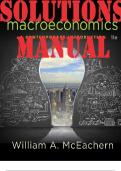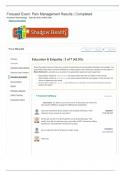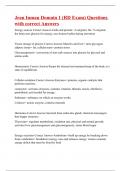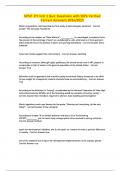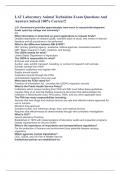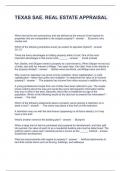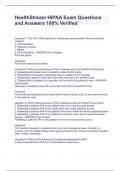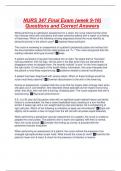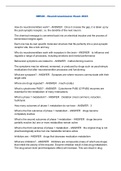,CHAPTER 1
THE ART AND SCIENCE OF ECONOMIC ANALYSIS
INTRODUCTION
This chapter has two purposes: to introduce students to some of the basic language of economics and
to stimulate student interest in the subject. It conveys to students that economics is not only found in
the financial section of the newspaper, but also is very much a part of their everyday lives. Beginning
with the economic problem of scarce resources but unlimited wants, this chapter provides an
overview of the field and the analytical techniques used. Concepts introduced include: resources,
goods and services, the economic decision makers in the economy, and marginal analysis. Two
models for analysis, the circular flow model and steps of the scientific method, are introduced. The
Appendix introduces the use of graphs.
CHAPTER OUTLINE
I. The Economic Problem: Scarce Resources, Unlimited Wants
Economics is about making choices. The problem is that wants or desires are virtually
unlimited while the resources available to satisfy these wants are scarce. A resource is
scarce when it is not freely available, when its price exceeds zero. Economics studies how
people use their scarce resources in an attempt to satisfy their unlimited wants.
A. Resources
The inputs, or factors of production, used to produce the goods and services that
people want. Resources are divided into four categories:
1. Labor: Human effort, both physical and mental
2. Capital
• Physical capital: Manufactured items (tools, buildings) used to produce
goods and services.
• Human capital: Knowledge and skills people acquire to increase their
productivity.
3. Natural resources: gifts of nature, bodies of water, trees, oil reserves, minerals
and animals.
• These can be renewable or exhaustible.
4. Entrepreneurial ability: The imagination required to develop a new product
or process, the skill needed to organize production, and the willingness to take
the risk of profit or loss.
• Payments for resources: Labor–wage; capital–interest; natural resources–
rent; entrepreneurial ability–profit.
B. Goods and Services
• A good is something we can see, feel, and touch (i.e., corn). It requires scarce
resources to produce and is used to satisfy human wants.
• A service is not tangible but requires scarce resources to produce and satisfy
human wants (i.e. haircut).
• A good or service is scarce if the amount people desire exceeds the amount
available at a price of zero. Goods and services that are truly free are not the
subject matter of economics. Without scarcity, there would be no economic
problem and no need for prices
,2 Chapter 1 The Art and Science of Economic Analysis
• “There is no such thing as a free lunch.” The lunch may seem free to you, but it
draws scarce resources away from the production of other goods and services,
and whoever provides a free lunch often expects something in return.
C. Economic Decision Makers and Markets
There are four types of decision makers:
1. Households. As consumers, demand goods and services produced. As resource
owners, supply resources to the resource market.
2. Firms. Use resources that households supply and produce goods and services
that households demand.
3. Governments. Use resources that households supply and produce goods and
services that households demand.
4. The rest of the world. Use resources that households supply and produce goods
and services that households demand.
• Markets: Buyers and sellers carry out exchanges in markets.
• Goods and services are exchanged in product markets.
• Labor, capital, natural resources, and entrepreneurial ability are exchanged
in resource markets.
D. A Simple Circular Flow Model
• A simple circular flow model in Exhibit 2 describes the flow of resources,
products, income and revenue among economic decision makers.
II. The Art of Economic Analysis
A. Rational Self-Interest
• Economics assumes that individuals, in making choices, rationally select
alternatives they perceive to be in their best interests.
o Rational refers to people trying to make the best choices they can, given
the available information.
• Each individual tries to minimize the expected cost of achieving a given benefit
or to maximize the expected benefit achieved with a given cost.
B. Choice Requires Time and Information
Time and information are scarce and therefore valuable. Rational decision makers
acquire information as long as the expected additional benefit from the information
is greater than its expected additional cost.
C. Economic Analysis Is Marginal Analysis
A theory predicting that the standard of living in economies around the world will
grow more similar over time, with poor countries eventually catching up with richer
ones.
• Economic choice is based on the comparison of expected marginal cost and the
expected marginal benefit.
• Marginal means incremental or additional.
• A rational decision maker changes the status quo if the expected marginal
benefit from the information is greater than its expected marginal cost.
, Chapter 1 The Art and Science of Economic Analysis 3
D. Microeconomics and Macroeconomics
• Microeconomics: The study of individual economic choices (e.g., your
economic behavior, a company’s economic behavior).
• Macroeconomics: The study of the performance of the economy as a whole, as
measured, for example, by total production and employment.
• Economic fluctuations: The rise and fall of economic activity relative to the
long-term growth trend of the economy; also called business cycles.
III. The Science of Economic Analysis
A. The Role of Theory
An economic theory, or economic model, is a simplification of economic reality
that is used to make predictions about cause and effect in the real world. An eco-
nomic theory captures the important elements of the problem under study.
B. The Scientific Method
A four-step process of theoretical investigation:
1. Identify the question and define relevant variables. A variable is a measure
that can take on different values at different times.
2. Specify assumptions:
• Other-things-constant assumption: Focuses on the relationships
between the variables of interest, assuming that nothing else important
changes (i.e., ceteris paribus).
• Behavioral assumptions: Focus on how people will behave (i.e., in
their rational self-interest).
3. Formulate a hypothesis, a theory about how key variables relate to each
other. The purpose of this hypothesis, like that of any theory, is to help
make predictions about cause and effect in the real world
4. Test the hypothesis. Compare its predictions with evidence. The theory is
then rejected, accepted, or modified and retested.
C. Normative Versus Positive
• A positive economic statement concerns what is; it can be supported or rejected
by reference to facts.
• A normative economic statement concerns what should be; it reflects an opin-
ion and cannot be shown to be true or false by reference to the facts.
D. Economists Tell Stories
• Economists explain their theories by telling stories about how they think the
economy works. To tell a compelling story, an economist relies on case studies,
anecdotes, parables, the personal experience of the listener, and supporting data
E. Predicting Average Behavior
• The task of an economic theory is to predict the impact of an economic event
on economic choices and, in turn, the effect of these choices on particular mar-
kets or on the economy as a whole. Economists focus on the average, or typical,
behavior of people in groups.

